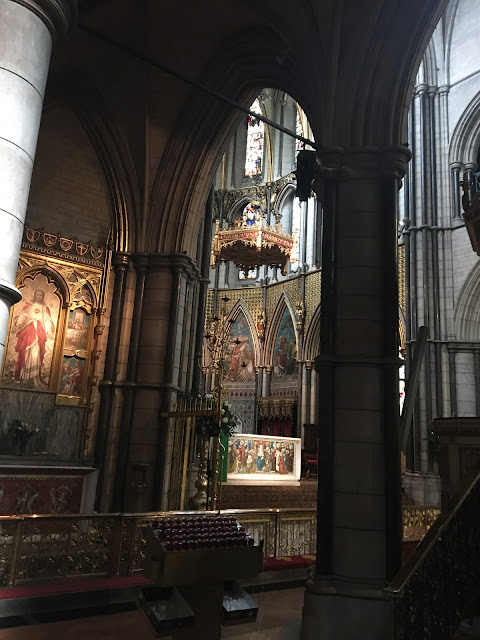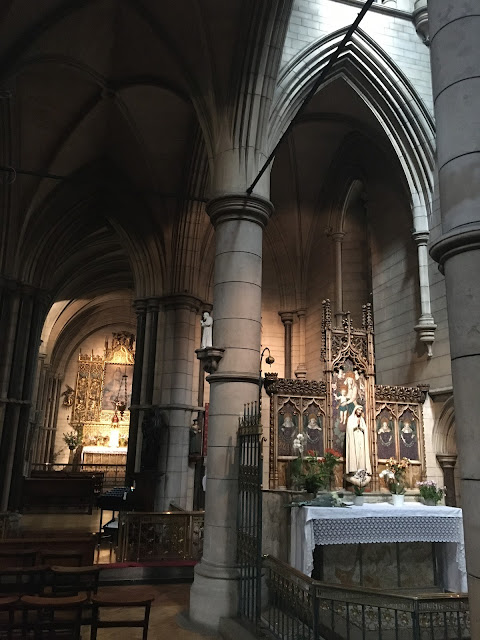I arrived at The Wallace Collection with time to spare and took the opportunity to revisit the remarkable Roman Catholic church of St James, Spanish Place. Truth be told I have been blogging for over a decade now, and this is only the third Roman Catholic church I've written about. A contrast to the contents of The Wallace Collection, but perhaps not so far in its emotive power from the work of some French Neo-classicists.
St James's was built in 1870s the work of Edward Goldie, grandson of that very interesting Neo-Classical architect Joseph Bonomi. The furnishing is however the work of, amongst others, J F Bentley, who is best remembered for the Neo-Byzantine Westminster Cathedral and the Late Gothic Holy Blood, Watford.
The exterior is blunt in the extreme, almost to the point of rudeness. Quite uncompromising. Such a contrast it must have been when newly built to all those reticent Georgian houses that then surrounded it. As with many Gothic Revival churches the tower was not completed. The interior is almost just as severe. Serious is perhaps more apt. The church is essentially a basilica with double aisles, with a transept before the apse. So, oddly for a gothic church you might think, the plan recalls the great early Christian churches of the city of Rome, such St Peter's, and the Lateran. Gloomth in the aisles contrasting strongly with light filled nave. Westminster Abbey and Salisbury cathedral are among the other obvious precedents. And amongst this eclectic range of sources there is, I think, somewhat unexpectedly the early Gothic architecture of Northern England (and Scotland).
Rather like one of those later churches by Pearson St James's is completely vaulted in stone and the overall effect is very successful being rather majestic and serene. Drama is reserved for the transepts where, to great spatial effect, the inner bay is 'bridged' in a similar manner to the transepts of Pearson's great church St Augustine, Kilburn. Were either church an influence on Bentley's design for Westminster Cathedral?
The furnishings - Late Gothic, quite effusive, rich and often very inventive - provide a contrast to the serene austerity of the architecture. I believe there were more, but they were culled post-Vatican II.
Apologies but I've managed somehow to delete all the photos of the exterior. What an idiot!









No comments:
Post a Comment